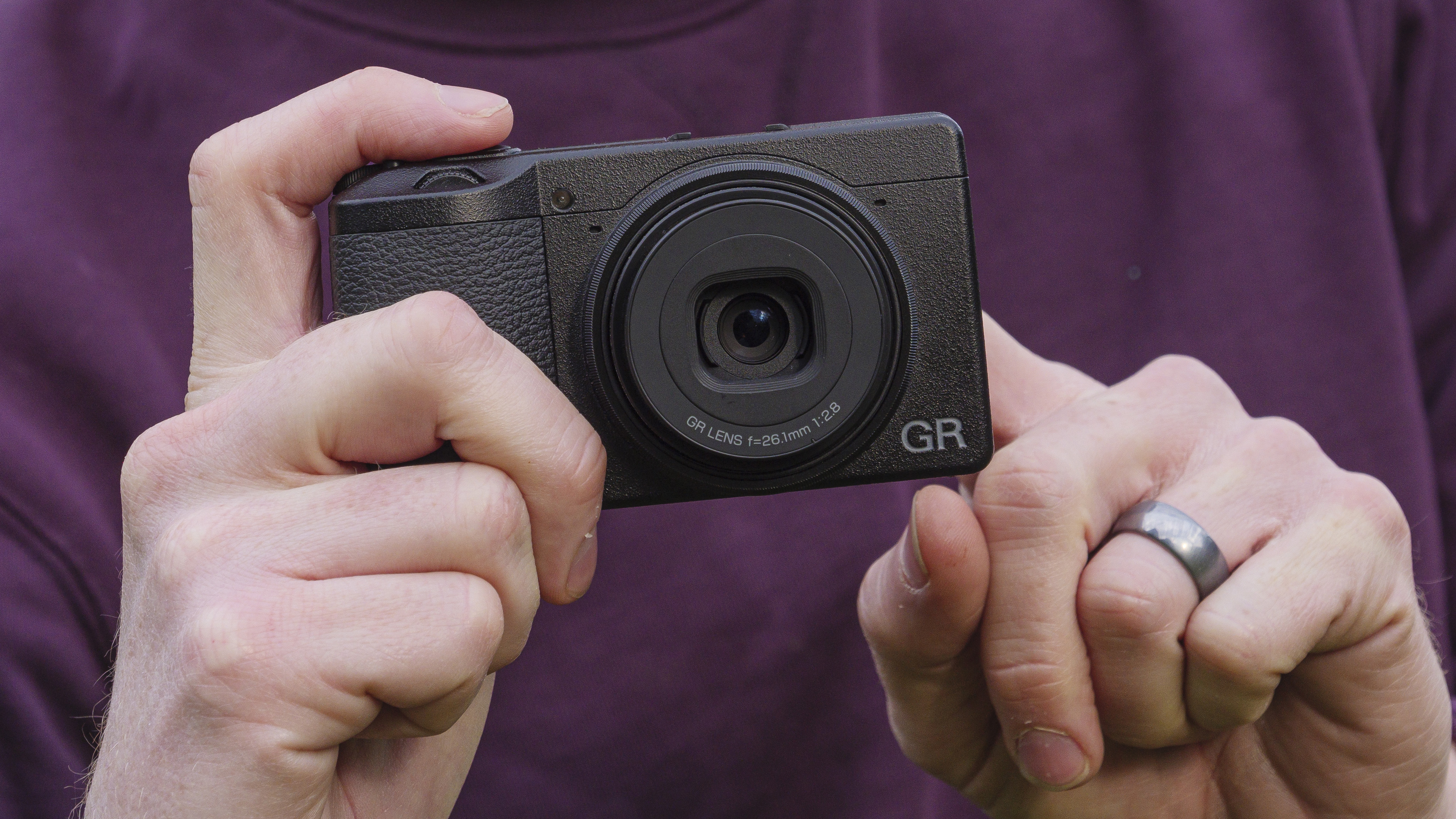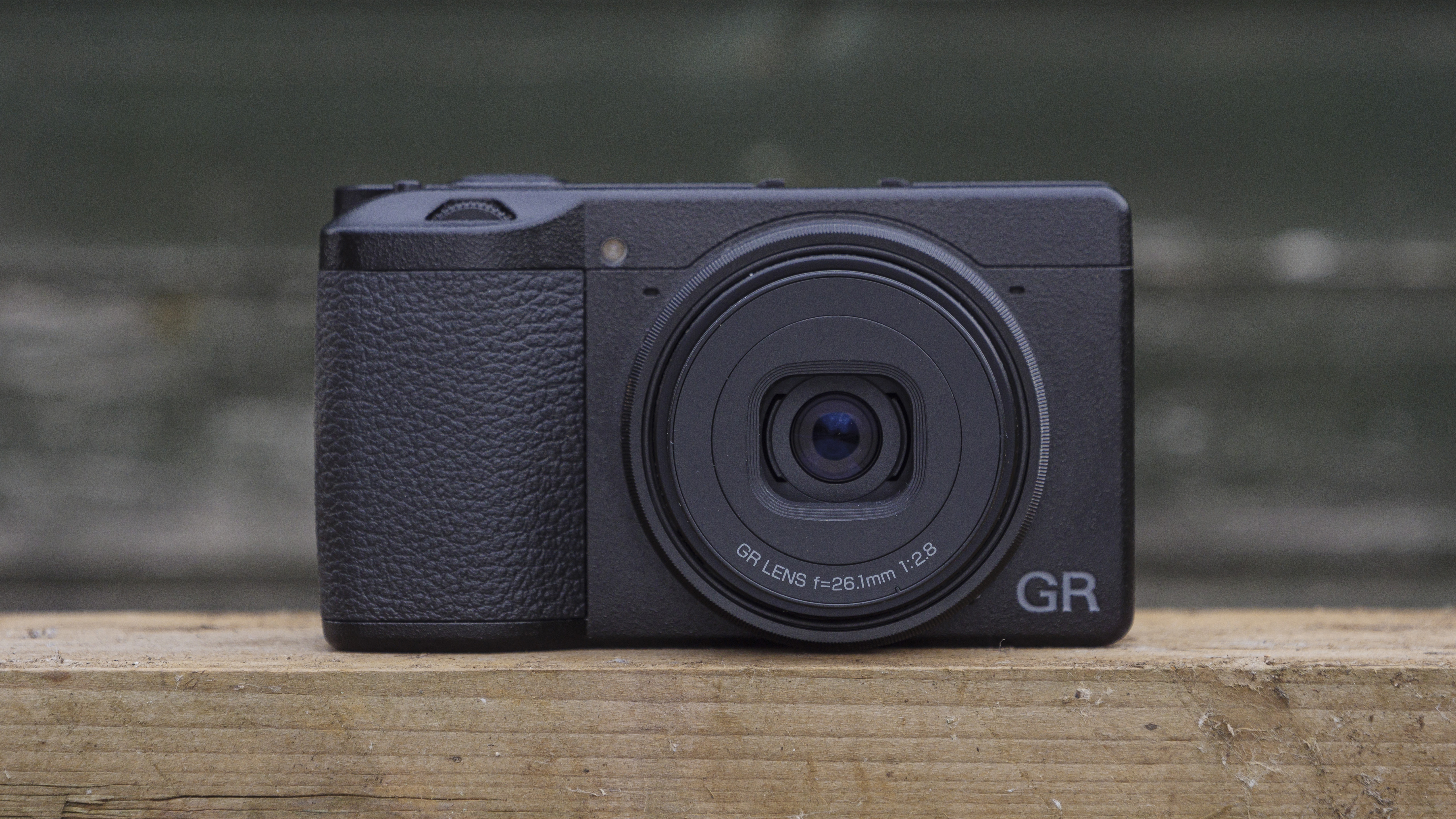Ricoh GR IV: 5 things I want to see
Will it be the street photographer’s new favorite compact?

If you want a discreet everyday camera that slips easily into a pocket, you can’t really go wrong with the Ricoh GR III series. And fans of the street photography snapper were given a big boost when Ricoh GR designer Inaba San dropped a hint during an interview – shared on Ricoh's YouTube earlier this month – that a fourth installment is in the pipeline (see video link, below, starting at 20:58).
With a 24MP APS-C sensor and smart features such as Snap autofocus, the GR III offers pretty much the best image quality you can get from a genuinely pocketable compact camera. It is so good, in fact, that I spent around $1,000 / £900 on the GR IIIx instead of the latest iPhone (the GR III X has a tighter 40mm focal length compared to the GR III’s 28mm lens, but is otherwise the same). And eighteen months on, I’m still loving it.
Such is the cult following and growing popularity of these specialist fixed-lens compacts that, thanks in part to the Fujifilm X100V, it's become increasingly difficult to get a GR IIIx. It’s hardly surprising, as they're among the best compact cameras around – so naturally there’s plenty of excitement at the prospect of a new model.
After 18 months with my own GR IIIx, I can speak from in-depth real-world experience to both the good and the bad things about the series. These are not perfect cameras, but a few tweaks could go a long way to creating what for me would be an even better pocket shooter. The following are the things I'd like to see in a potential Ricoh GR IV, in order of importance.
1. Stay small
When I was looking for an everyday camera back in 2021, the X100V hadn’t risen to the levels popularity it enjoys today (it’s now sold out everywhere), and I could have bought one new. However, impressive as the X100V is, it was simply too big for me. I wanted the best possible quality from a tiny camera that I could fit in my pocket and have on me all the time without needing to think about it.
The GR III / GR IIIx fits the bill. Sure, it’s a more basic camera in many ways, and there are features that could be added to improve the GR III shooting experience, but if those would require an increase in dimensions, then it’s a no from me. Size (small body and big sensor) is the most important feature of the GR series of cameras.

2. Add a built-in flash
I use my own GR IIIx for everyday photography, not just street photography, and the everyday includes nights out with friends, often in dimly lit environments. On many occasions I’ve wished for a built-in flash to give a little pop to portraits of my friends and family, but instead I've had to live with flat-looking high-ISO images with noise, or use a slow shutter. I could buy a bulky external flash that attaches to the hotshoe (Ricoh sells two flashguns), but such sizeable accessories defeat the compact nature of GR III cameras. Naturally, if the GR IV were to have a flash it would need to be a pop-up one that doesn’t demand a bigger camera body. Of all the features I'd like to see in the Ricoh GR IV, a built-in flash tops my list.
Sign up for breaking news, reviews, opinion, top tech deals, and more.
3. A more rugged build
I’ve had two (fixable) issues with my own GR IIIX in these 18 months – the menu button seized, and the lens became sticky. The former was a cheap fix that could be avoided by improved sealing (ultimately better weather-proofing), while the latter can be helped by using an optional lens protector. In the case of the menu button, there was residue inside that made it stick, which could have been avoided with better sealing applied to all the buttons and controls.
As for the lens, there’s an optional lens protector that could avoid damage caused by knocks, plus a protective camera case. These are useful accessories to buy, but personally I’ve opted against them because they make the whole package that much bigger and less pocketable. Don’t get me wrong, the GR III is well made, but an even more rugged build quality for the GR IV, so I can slip it unprotected into my pocket, would be appreciated by demanding photographers like me.

4. A tilt LCD for versatile viewing
To view and compose images with the GR III / GR IIIx, users rely on an impressive fixed 3-inch touchscreen. When I’ve used this everyday camera, especially for street photography, I’ve often wanted a tilt screen to make shooting at awkward angles easier, especially floor- and waist-level shooting. There’s also no option for an EVF, despite the hotshoe (having tried an optional optical viewfinder, I’m not convinced a small EVF accessory would be of much genuine use, anyway). However, a simple tilt mechanism for the LCD would be welcome. That comes with the caveat of keeping the same dimensions as the GR III, which would be a tough ask; usually a tilt screen requires a slight increase in depth. If it was an ever-so-slight increase, and the rumored GR IV was still pocketable, it would be a big win.
5. More reliable autofocus
If you’re a Ricoh GR III fan, you’re probably thinking why hasn’t battery life been mentioned yet? It’s true, the GR III's battery life is poor, but for me it’s 100% an acceptable trade-off for the camera's diminutive size. After all, tangibly better battery life means a physically bigger battery and a larger camera body – no thanks. Buy a spare battery or two instead – they’re tiny, and third-party options are super-cheap.
Rather, my fifth ask is better autofocus performance. Despite having the option of the intuitive snap autofocus (for a predetermined autofocus distance), I usually opt for single-point touch autofocus. Performance is decent in high-contrast light, but when the light fades you can experience focus hunting. I think the most intuitive autofocus mode is single-point touch focus – I just wish it was more reliable.

Final thoughts
The Ricoh GR IIIx is one of my favorite cameras, if flawed, and a successor doesn’t need to bring a lot to the table to become one of the best pocket compact cameras available. I expect a potential GR IV to have the same 28mm f/2.8 fixed lens, and, if there's a GR IVx, that camera to have a 40mm f/2.8 lens.
If I were asking for more, a rumored GR IV could benefit from more pixels that would in turn make crop modes even more useful. I use the crop modes a lot on the GR IIIx, especially the 71mm mode with the macro photography option, but those files are only 7.5MP. If the GR IV was to have a 32.5MP APS-C sensor for example (that sensor already exists in cameras like the Canon EOS R7), then its most extreme crop mode would be a better 10MP approx. A successor could also do better than the GR III’s full HD 1080p video up to 60fps – 4K video is the norm these days.
However, anyone who's used the GR III will tell you that it’s the shooting experience that would benefit from a few tweaks the most, rather than image quality. I’m not expecting huge improvements in a potential GR IV, but I am hoping for a more refined and rugged pocket shooter.
You might also like

Tim is the Cameras editor at TechRadar. He has enjoyed more than 15 years in the photo video industry with most of those in the world of tech journalism. During his time as Deputy Technical Editor with Amateur Photographer, as a freelancer and consequently editor at Tech Radar, Tim has developed a deeply technical knowledge and practical experience with cameras, educating others through news, reviews and features. He’s also worked in video production for Studio 44 with clients including Canon, and volunteers his spare time to consult a non-profit, diverse stories team based in Nairobi. Tim is curious, a keen creative, avid footballer and runner, and moderate flat white drinker who has lived in Kenya and believes we have much to enjoy and learn from each other.